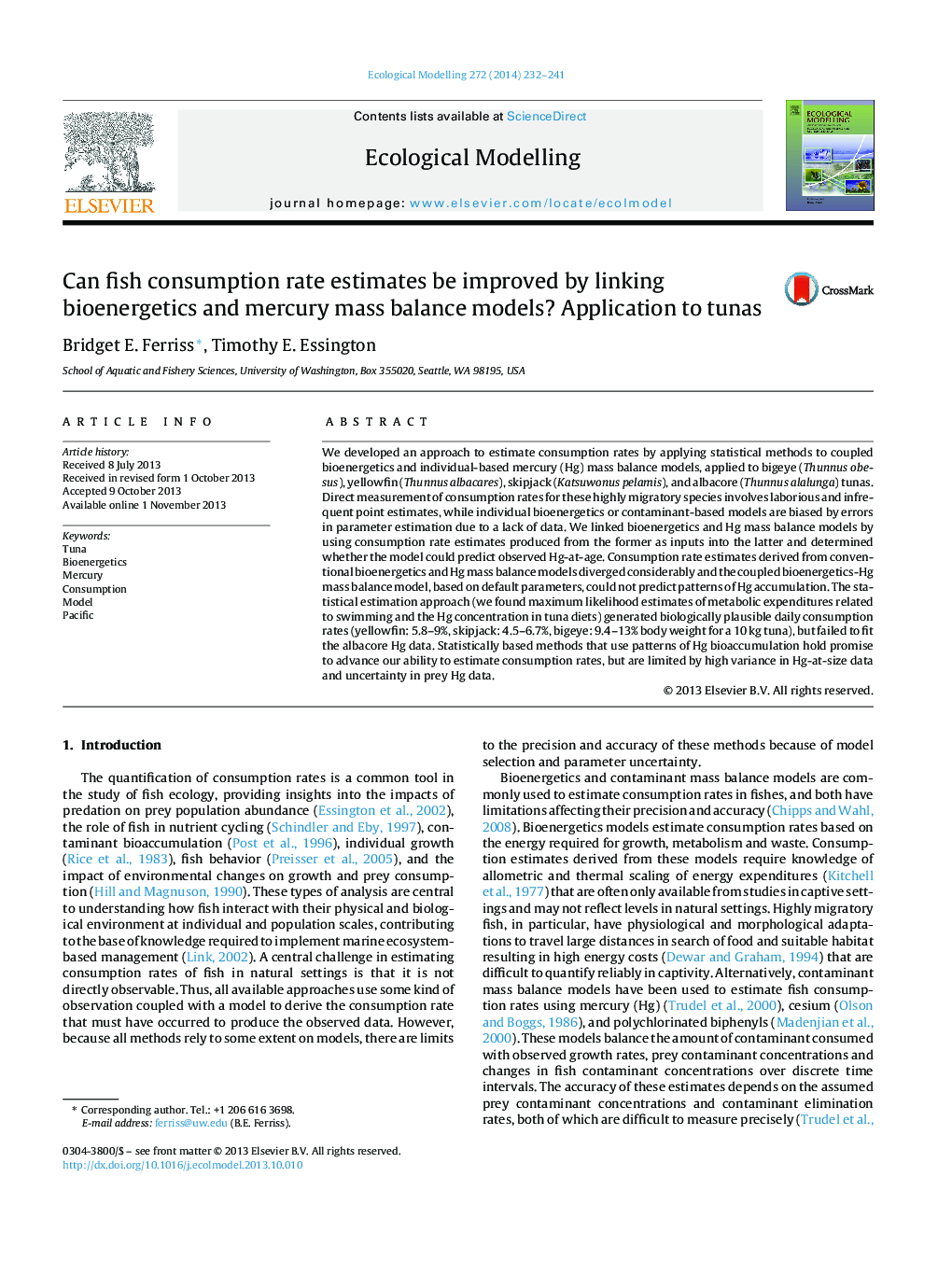| Article ID | Journal | Published Year | Pages | File Type |
|---|---|---|---|---|
| 6297007 | Ecological Modelling | 2014 | 10 Pages |
Abstract
We developed an approach to estimate consumption rates by applying statistical methods to coupled bioenergetics and individual-based mercury (Hg) mass balance models, applied to bigeye (Thunnus obesus), yellowfin (Thunnus albacares), skipjack (Katsuwonus pelamis), and albacore (Thunnus alalunga) tunas. Direct measurement of consumption rates for these highly migratory species involves laborious and infrequent point estimates, while individual bioenergetics or contaminant-based models are biased by errors in parameter estimation due to a lack of data. We linked bioenergetics and Hg mass balance models by using consumption rate estimates produced from the former as inputs into the latter and determined whether the model could predict observed Hg-at-age. Consumption rate estimates derived from conventional bioenergetics and Hg mass balance models diverged considerably and the coupled bioenergetics-Hg mass balance model, based on default parameters, could not predict patterns of Hg accumulation. The statistical estimation approach (we found maximum likelihood estimates of metabolic expenditures related to swimming and the Hg concentration in tuna diets) generated biologically plausible daily consumption rates (yellowfin: 5.8-9%, skipjack: 4.5-6.7%, bigeye: 9.4-13% body weight for a 10Â kg tuna), but failed to fit the albacore Hg data. Statistically based methods that use patterns of Hg bioaccumulation hold promise to advance our ability to estimate consumption rates, but are limited by high variance in Hg-at-size data and uncertainty in prey Hg data.
Related Topics
Life Sciences
Agricultural and Biological Sciences
Ecology, Evolution, Behavior and Systematics
Authors
Bridget E. Ferriss, Timothy E. Essington,
